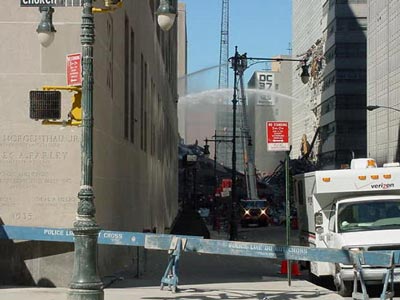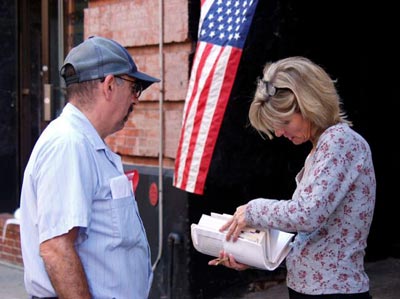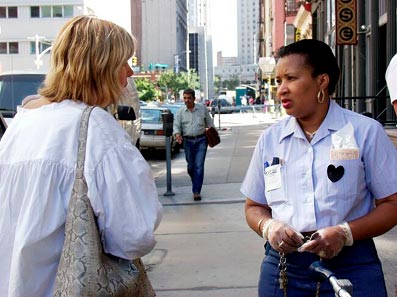Over 80 thousand delivery points were initially affected as delivery service was suspended below 14th street in Manhattan for days following the attack. Thirty thousand delivery points remained affected even after most of the post offices reopened. Carriers who began to return to their old routes had trouble reaching some homes as the police and National Guard moved barricades and switched street closings. Day by day, carriers did not know whether or not they would be allowed into certain areas. The first two weeks after the attack, patrons stood in long lines, designated by ZIP codes, that were set up outside the Farley building to get their mail. The block-long lines finally eased as post offices reopened and carriers began to reach more of the formerly cordoned-off areas.


Mail held Tuesday night at the Wall Street post office was protected not by secure gates, but by a single USPS employee. With electricity to the area cut, the security gate to the post office would not close. Determined to protect the mail under his watch, station manager Robert "Bubba" Ford spent the night in the cab of a mail truck parked at the opened gate. A bearded, bear of a man, Ford recalled that over the long night, "it was pitch dark and the wind was rattling the gates, and there was all the dust." ¹
Among the letters and packages sent to specific companies and individuals in the towers in the following months were thousands of loosely addressed items. Mail addressed to "Ground Zero," "The People Hurt," "The Search Dogs," and "The Rescuers" made its way to the WTC carriers in the Farley building. Letters that could be forwarded, such as those to fire or police personnel, were sent on. Many others were collected by New York City officials.

Over 80,000 pieces of mail addressed to the World Trade Center arrived every day for months following the attacks. Each piece was sorted by the now post office-bound clerks. When the pigeon-hole containers filled up, clerks moved the missives to overflowing crates marked by addressee. Most of the WTC mail sat unclaimed through October. Finally, company representatives began to claim their mail - including that of individuals killed in the attack. After three months of holding the WTC mail, the postal service began to return unclaimed mail to the senders. This marked the first time in the service's history that unclaimed mail was allowed to remain unclaimed for such a long time before being returned.
1) "What Will Become of Mail For Zip Codes 10047, 10048?, "The Wall Street Journal, Monday, September 17, 2001.
